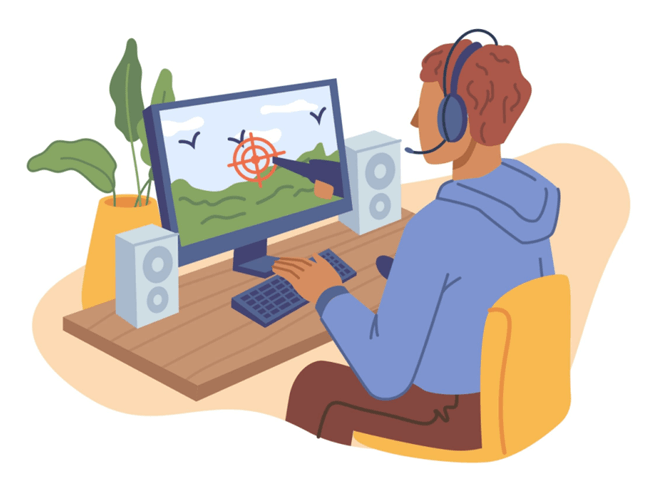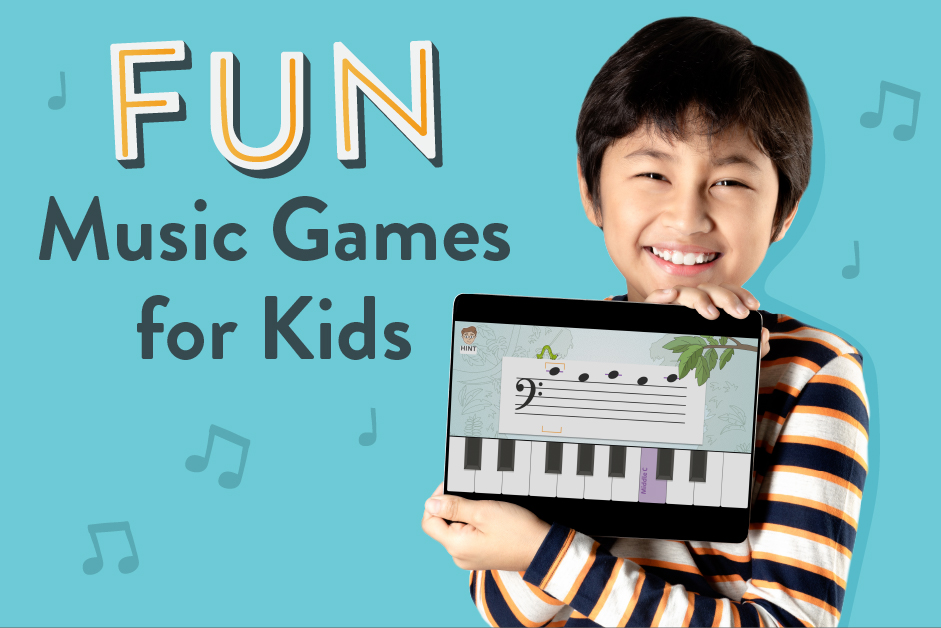

Navigating the Digital Playground: A Parent’s Guide to Safe Online Gaming for Kids
In today’s digital age, online gaming is an undeniable part of childhood. For many kids, it’s a source of fun, a way to connect with friends, and even a platform for learning and creativity. However, the online world, like any public space, comes with potential risks. For parents, the thought of their children interacting with strangers, encountering inappropriate content, or becoming overly engrossed can be a significant source of worry.
The good news is that online gaming can be a safe and positive experience for children. It requires awareness, proactive steps from parents, and open communication. This article aims to equip parents with the knowledge and tools needed to help their children navigate the digital playground safely and responsibly.
Why Kids Love Online Games (And Why That’s Okay)
Before diving into safety, it’s important to understand the appeal of online games. They offer more than just entertainment:
-
- Social Connection: Many games allow kids to play with friends, fostering teamwork and communication skills. In an increasingly digital world, this can be a vital social outlet.
- Problem-Solving & Strategy: Many games require critical thinking, planning, and quick decision-making.
- Creativity & Expression: Games like Minecraft or Roblox offer vast creative possibilities, allowing kids to build, design, and express themselves.

- Skill Development: Hand-eye coordination, reaction time, and multitasking are often enhanced through gaming.
- Fun and Relaxation: At its core, gaming is enjoyable and provides a way for kids to unwind and have fun.
Recognizing these benefits helps frame online gaming not just as a risk to be managed, but as an activity that, with the right guidance, can be enriching.
Understanding the Potential Risks

While the benefits are real, so are the dangers. Being aware of the risks is the first step to mitigating them:
-
- Contact with Strangers / Predators: Many online games have chat features, voice communication, or the ability to add “friends.” This opens the door for malicious individuals to attempt to contact children.
- Cyberbullying: Kids can be subjected to harassment, taunting, or exclusion by other players, sometimes anonymously.
- Inappropriate Content: While game content itself is rated, online interactions can expose children to explicit language, mature themes, or links to unsuitable websites shared by other players.

- In-Game Purchases (Microtransactions): Many free or low-cost games rely on in-game purchases for revenue. This can lead to children spending significant amounts of money without understanding the implications, often driven by peer pressure or the desire for in-game advantages.
- Excessive Screen Time / Addiction: The engaging nature of games can lead to children spending too much time playing, potentially impacting sleep, schoolwork, physical activity, and other important aspects of life.
- Data Privacy: Some games collect personal information. Understanding what data is collected and how it’s used is important.
What Makes an Online Game “Safe” for Kids?
Not all online games are created equal when it comes to safety. Look for games and platforms that prioritize child safety through:
- Clear Age Ratings: Systems like ESRB (Entertainment Software Rating Board) in North America or PEGI (Pan European Game Information) provide content ratings and descriptors (e.g., Mild Fantasy Violence, In-Game Purchases). While not a perfect indicator of online interaction safety, they are a crucial starting point for content appropriateness.
- Robust Parental Controls: The best platforms and games offer extensive parental controls that allow you to:
- Disable or restrict chat features.
- Limit or block in-game purchases.
- Control who your child can interact with (e.g., friends only).
- Set time limits.
- Filter content.
- Moderated Communities: Platforms that actively monitor chat, respond to reports of inappropriate behavior, and have clear rules of conduct are generally safer.
- Limited or No Open Chat: Games designed specifically for younger children often have pre-set phrases for communication or no chat function at all, minimizing the risk of exposure to inappropriate language or contact with strangers.
- Focus on Creativity or Cooperation: Games that emphasize building, exploring, or working together (co-op) can sometimes foster a more positive and less competitive/toxic environment than highly competitive player-versus-player (PvP) games.
- Privacy Settings: Games and platforms should allow users (or parents) to control the visibility of profiles and personal information.
Finding and Choosing Safe Online Games
Armed with the understanding of risks and safety features, here’s how to actively find safe games:
- Check Age Ratings and Descriptions: Always start with ESRB or PEGI ratings. Read the content descriptors carefully.
- Read Reviews – Especially Parent Reviews: Look beyond official descriptions. What are other parents saying about the game’s community, chat features, and potential issues? Websites and forums dedicated to parenting and technology can be great resources.
- Research the Platform/Publisher: Does the company have a reputation for child safety? Do they have clear safety policies?
- Look for Kid-Specific Platforms: Websites or apps designed specifically for children often have curated content and stricter safety measures (e.g., ABCya, PBS Kids Games, certain sections of larger platforms like YouTube Kids).
- Watch Gameplay Videos: See the game in action. How does communication work? What’s the general tone of the gameplay?
- Play It Yourself (If Possible): The best way to know if a game is suitable is to experience it firsthand.
- Talk to Other Parents: Get recommendations from parents whose approaches to technology you trust.
Creating a Safe Gaming Environment at Home
Finding safe games is only part of the equation. The environment and rules you establish at home are equally crucial:
- Use Parental Controls: Activate and customize parental controls on consoles (PlayStation, Xbox, Nintendo), PCs, tablets, smartphones, and even your home router. These tools are powerful but require setup.
- Set Clear Rules and Boundaries:
- Time Limits: Define how long and when gaming is allowed. Use timers or parental control features to enforce this.
- Approved Games List: Decide which games are okay and which are not.
- Communication Rules: Specify who they are allowed to talk to online (e.g., only real-life friends, or approved online friends).
- Information Sharing: Absolutely no sharing of personal information like full name, address, school, phone number, or passwords.
- In-Game Purchases: Make it clear that they must always ask permission before attempting any purchase. Do not link your primary payment methods directly to their gaming accounts without strict password protection or requiring explicit permission for every transaction.
- Position Devices in Common Areas: Keep computers and gaming consoles in family rooms rather than isolated bedrooms, especially for younger children. This allows for passive monitoring and makes it easier for kids to come to you if they encounter something uncomfortable.
- Be Involved and Interested: Ask your kids about the games they are playing. Who are they playing with? What are they building or trying to achieve? Show genuine interest. This opens the door for them to share concerns.
- Regularly Review Friends Lists: On platforms that allow adding friends, occasionally review who your child has added. Ask who these people are.
- Check Communication Logs (Where Available): Some platforms allow parents to review chat logs. Use this feature judiciously and transparently, explaining to your child why it’s necessary for their safety.
Teaching Kids to Be Safe Online Gamers
Empowering your children with the knowledge and skills to protect themselves is perhaps the most important strategy:
- The “Stranger Danger” Rule Applies Online: Teach them that people online are not always who they say they are. They should be wary of unsolicited contact.
- Protect Personal Information: Reiterate what information is private and should never be shared online.
- How to Handle Inappropriate Content/Contact: Teach them to:
- Never respond to messages that make them feel uncomfortable.
- Know how to block or mute other players.
- Know how to report inappropriate behavior within the game or platform.
- Come to a trusted adult immediately if something or someone makes them feel scared, uncomfortable, or confused. Assure them they will not be in trouble for reporting.
- Be a Good Digital Citizen: Encourage respectful behavior towards other players. Explain that cyberbullying is wrong and has real consequences.
- Recognize Scams and Tricks: Educate them about common online scams, like offers that seem too good to be true or requests for passwords.
- The Importance of Breaks: Help them recognize when they need a break and encourage other activities.
Conclusion
Online gaming is a dynamic and evolving landscape. While it presents potential challenges, it also offers valuable opportunities for fun, learning, and social connection for children. By staying informed, utilizing available safety tools, setting clear family rules, and, most importantly, maintaining open and ongoing communication with your children, you can help them enjoy the digital playground safely. Your active involvement is the most effective safety feature of all.






